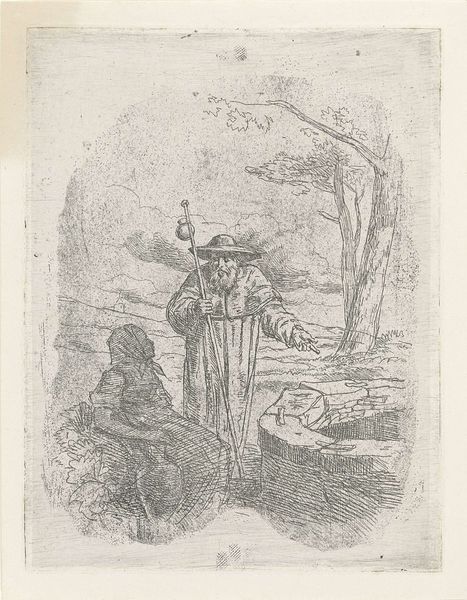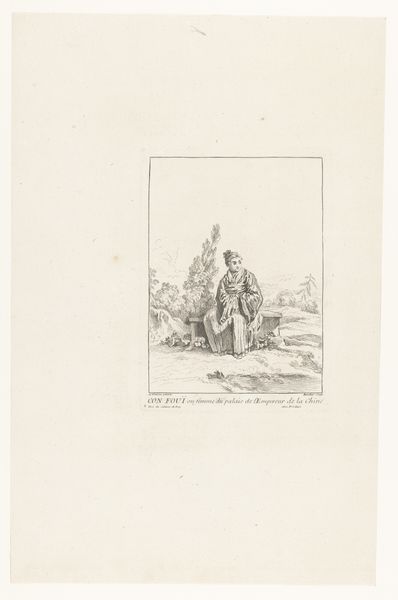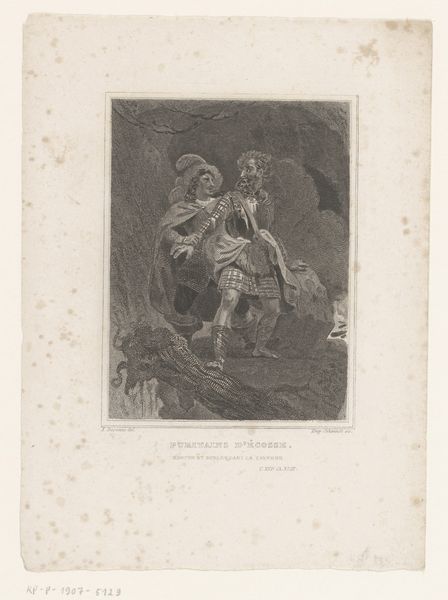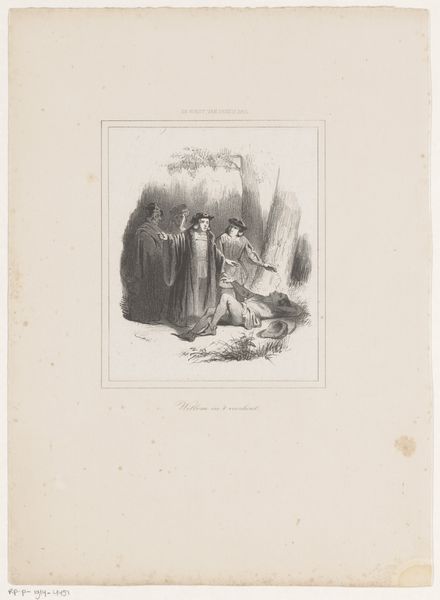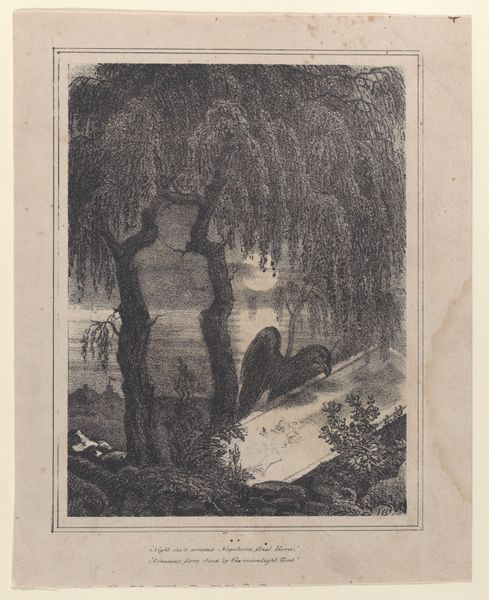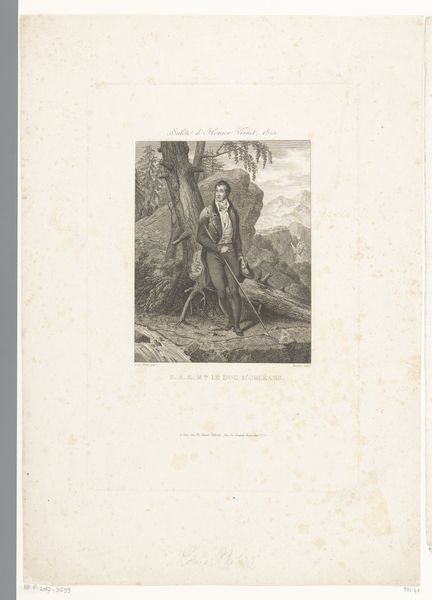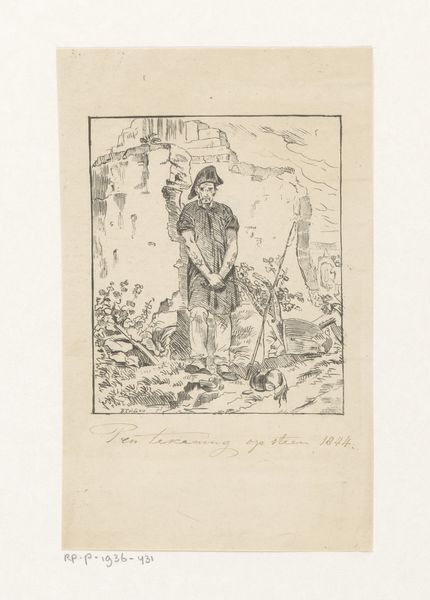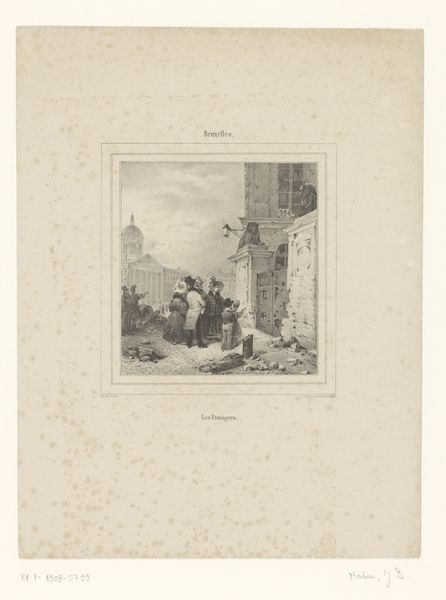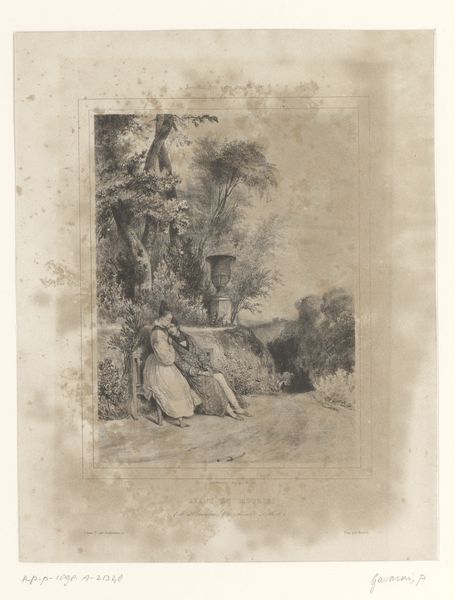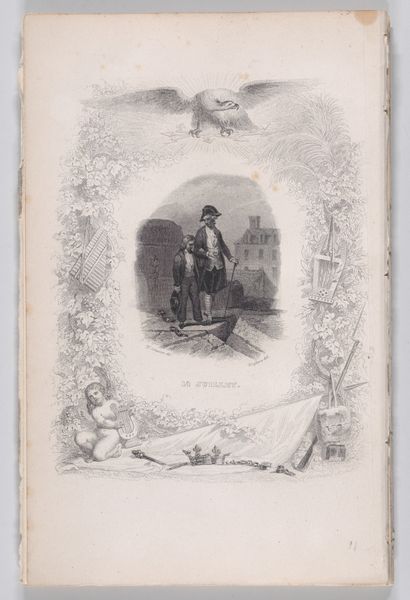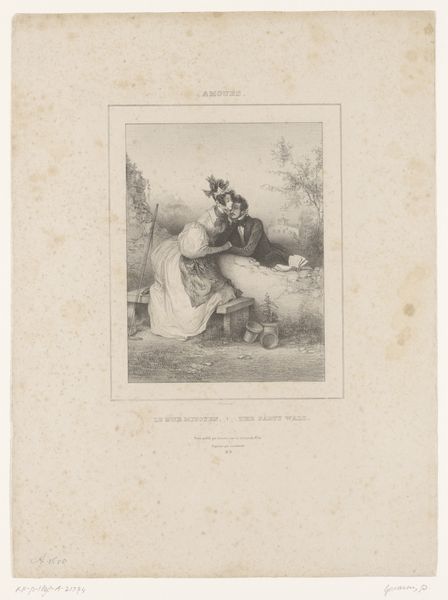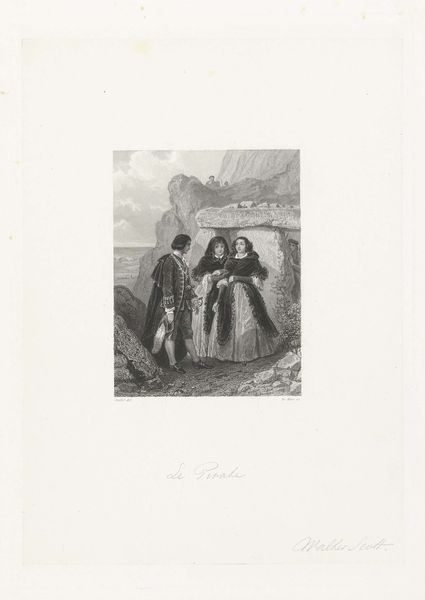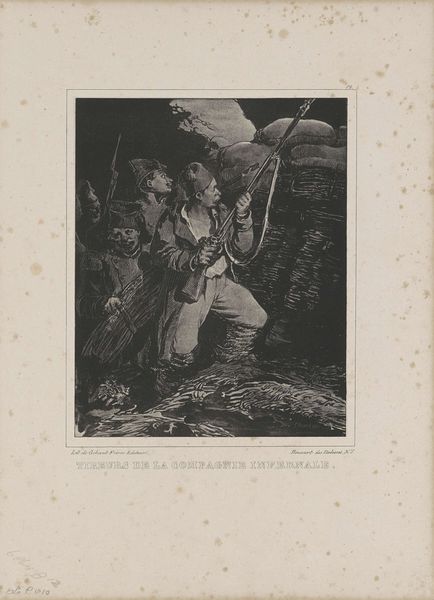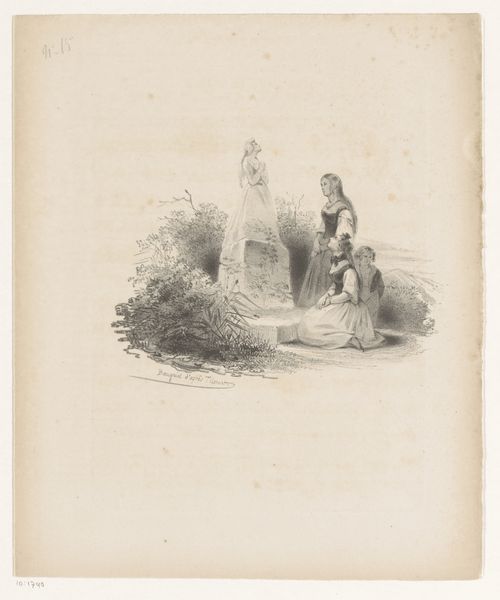
drawing, print, etching
#
drawing
#
narrative-art
# print
#
etching
#
old engraving style
#
romanticism
#
genre-painting
Dimensions: height 340 mm, width 245 mm
Copyright: Rijks Museum: Open Domain
Nicolas Toussaint Charlet made this print, Hollandse Wacht, in 1832 using lithography. This is a printmaking technique using a flat stone or metal plate on which the image areas are worked using a greasy substance so that the ink will adhere to them, while the non-image areas are made ink-repellent. Lithography, as a printing process, allows for the relatively quick and easy reproduction of images. This was a huge shift from earlier, more labourious printing techniques. Consider how the texture and tones are achieved through the layering of ink, creating depth and shadow. The use of lithography allowed Charlet to capture the rough textures of the guard's clothing, the crumbling walls, and the debris scattered around, elements which speak to the social context of military life and the realities of conflict. Looking at this print, it’s important to consider lithography's role in democratizing art, making images more accessible to a wider audience. It challenges traditional hierarchies between fine art and more accessible visual culture.
Comments
No comments
Be the first to comment and join the conversation on the ultimate creative platform.
